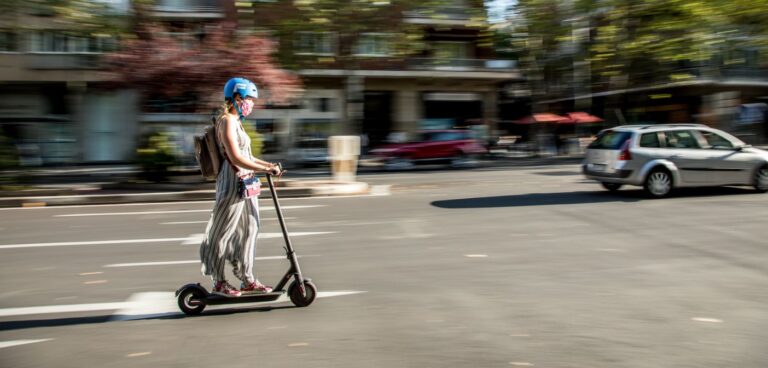Micromobility transport options should be made available to as many Londoners as possible, writes Josh Cottell, research manager at think tank Centre for London…
Electric scooters have been all over the news recently, in part because of the UK’s biggest trial of them launched in London in June. The trial allows people to rent e-scooters and ride them on roads in participating boroughs. Some 85,000 journeys were made on e-scooters as part of the trial in the first three months, and millions have been made in similar trials across the UK over the last year.
These millions of journeys are a drop in the ocean compared to the 964 million cycle journeys estimated to have taken place last year in the UK. But the numbers are growing rapidly and illustrate burgeoning new modes of travel on small vehicles including e-scooters, e-bikes, and conventional bikes, known as ‘micromobility’.
Why should we care about how many people travel by micromobility vehicles? There are a number of reasons why travelling on a small vehicle – one that can be safely ridden alongside a bicycle in a cycle lane – might be desirable. If more people switched from driving a privately owned car or hailing a taxi to riding a bike, e-bike, or e-scooter, then carbon emissions from transport would fall, air quality would improve, and roads would become less congested.
The pedal bike is the oldest kind of micromobility. Although more people have taken up cycling in recent years – a trend that appears to have been accelerated, at least temporarily, by the Covid-19 pandemic – only 2% of trips in London are made by bike. It’s a way of getting around that brings a host of benefits, but not everyone feels like cycling is for them. For some people this is simply a matter of preference – they could cycle if they wanted to, but they prefer to catch the train or drive a car.
But for others, cycling, using an e-bike or an e-scooter is not a realistic option. Not only is there no space to store a bike in their house, or a cycle lane in which to safely ride to the places they want to go, but they can’t afford to buy a bike, let alone an e-bike. They might be tempted to rent one, but there may not be any in their area. Rental schemes have overwhelmingly operated in inner London, and the e-scooter trial so far covers less than a third of London’s boroughs. For some people, the cyclists that they see don’t look like them. Compared to London’s population, cyclists in London are more likely to be young, male, affluent, and white. These are just a handful of the reasons why someone might not cycle in London.
New modes of small electric vehicle such as e-bikes and e-scooters have the potential to widen access to micromobility by providing a way for people to travel with less physical exertion, and by breaking the mould of what cycling involves. With the right infrastructure in place, shared schemes could allow more people to try micromobility at a relatively low price, especially in areas further from the city centre. But to enable everyone to be able to choose whether to ride a bike, e-bike, or e-scooter, public policy needs to recognise the range of barriers that many people face. This is crucial not only because addressing inequalities is a worthy goal in itself, but also because it will help us to realise the wider opportunities presented by micromobility, particularly reducing carbon emissions and air pollution.
We need to enable more people to get around London in a safe, sustainable, and active way. There are lots of possible ways to do this: later this month Centre for London will publish a report setting out the actions that government and others can take to make sure that millions more trips will be made on micromobility vehicles, but also by as many Londoners as possible.





